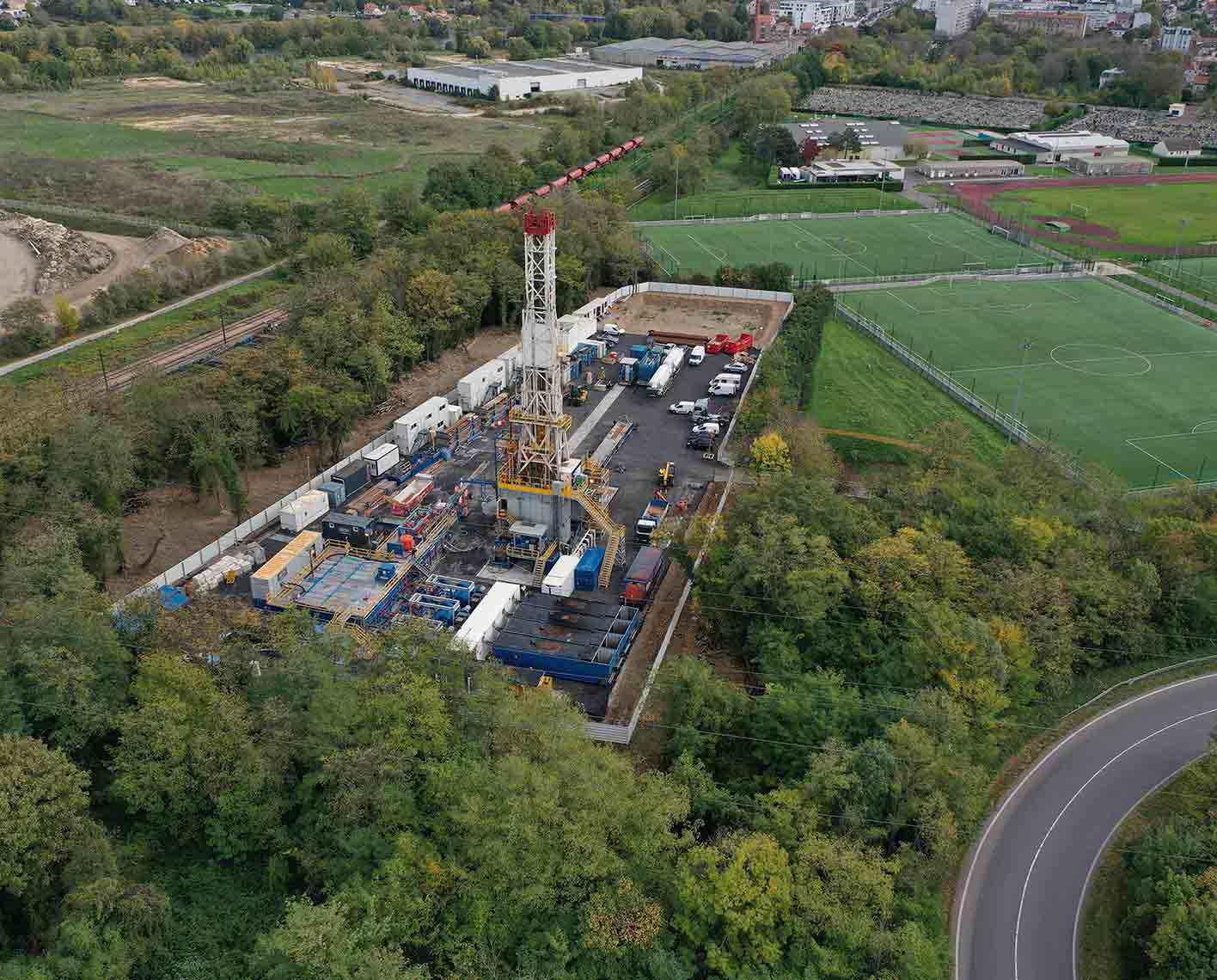Bringing the Heat: A Geothermal Drilling Story
Published: 02/28/2024

Bringing the Heat: A Geothermal Drilling Story
Published: 02/28/2024

Since 2018, two Parisian suburbs—Grigny and Viry-Chatillon—have been tapping into reliable, affordable geothermal heat.
We recently helped these communities expand their geothermal heating capacity by using an innovative technology originally developed for drilling oil and gas wells.
Fighting fuel poverty
Grigny and Viry-Chatillon, both just south of central Paris, have faced significant “fuel poverty” challenges in recent years, with heating costs representing more than half of expenses for some residents.
Faced with rising costs of conventional energy sources for heating, the communities turned to geothermal to provide a solution. Both Grigny and Viry-Chatillon sit atop the Dogger Reservoir, which offers the city of Paris and surrounding environs access to the greatest density of geothermal heat in the world.
Beginning in 2014, plans for a municipal geothermal district heating network for the two communities began to take shape, and by 2018, 10,000 homes as well as other public and private buildings across Grigny and Viry-Chatillon were connected to a more affordable and renewable energy source for heat.
Expanding geothermal heat
In 2022, Sipperec, the intercommunal syndicate in the greater Paris region for energy and communication networks, initiated an expansion project to connect surrounding municipalities to geothermal district heating. Sipperec’s majority-owned renewable energy company, Seer, was handed the task of managing the project’s operations.
Working alongside Seer and GPC IP, a well-known geothermal drilling engineering and development company in France, we helped the drilling contractor, SMP Energies, to drill two successful geothermal wells for the expansion project.
Overcoming challenges
As the predrilling work began, several challenges began to surface. Not only was the location of the new geothermal wells close to other wells but also the production layers of the target reservoir were razor thin. It became clear to the engineering team early in the project that conventional drilling techniques would not deliver sufficient flow for production.
In all geothermal projects, heat and flow are the most crucial components. While achieving the necessary heat requirements would not be a challenge, GPC IP’s drilling engineers needed to think outside of the box to enable sufficient flow for the wells. So, instead of a conventional vertical well, they went with a more complex subhorizontal doublet well design to access the most productive area of the reservoir.
Making it flow
To precisely target the thin reservoir, our PeriScope HD™ well placement technology was deployed to deliver ultrahigh resolution, real-time data for more precise reservoir boundary and layer detection.
The technology, which has been used extensively for drilling horizontal shale oil and gas wells, helped the driller sustain a more accurate trajectory inside the reservoir, leading to an increase in the flow rate and water production.
“This was only the second subhorizontal geothermal doublet architecture completed in the Paris Basin,” said Pierre Ungemach Chairman/CEO of GPC IP/GEOFLUID. “The Grigny project achieved significant progress in optimizing the well placement by implementing SLB’s technology.”
“Furthermore, we were able to meet the operator’s target for productive/injective capacity in a locally sensitive, poorly productive reservoir environment,” added Miklos Antics, Managing Director of GPC IP/GEOFLUID.
“This well placement technology unlocks geothermal potential in areas that were previously uneconomical,” said Olivier Peyret, SLB’s New Energy Director for Europe. “This is a crucial component in scaling up geothermal project developments in new regions around the world.”
Making a difference
The two geothermal wells completed as part of the expansion project will provide 65% renewable energy to more than 8,000 homes on a district heating network of more than 20,000 homes.
Not only will this provide more affordable heating for these communities, it also will reduce CO2 emissions from the towns of Grigny and Viry-Chatillon by 15,000 tons each year—the equivalent of removing the emissions of 700 cars.
